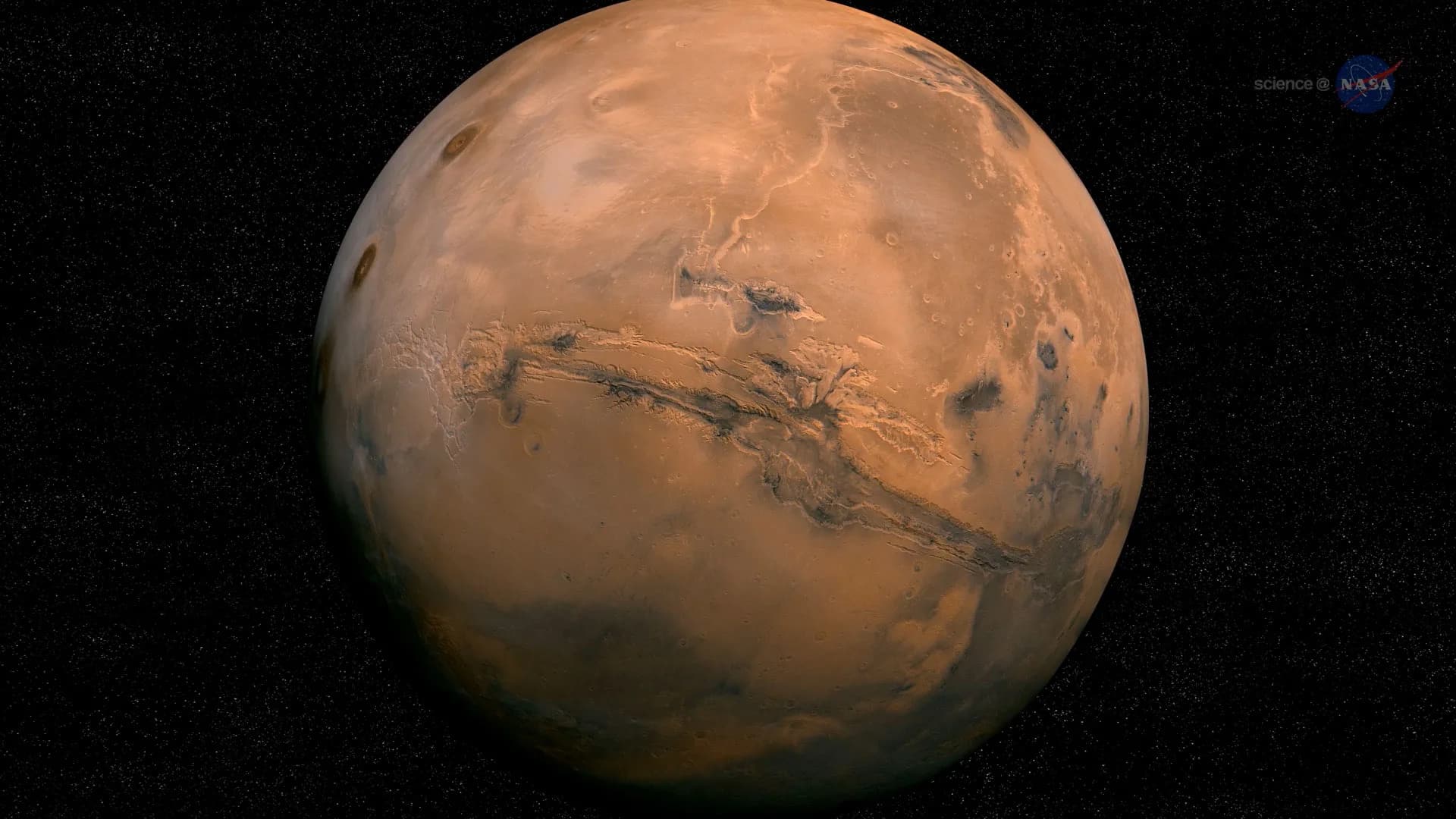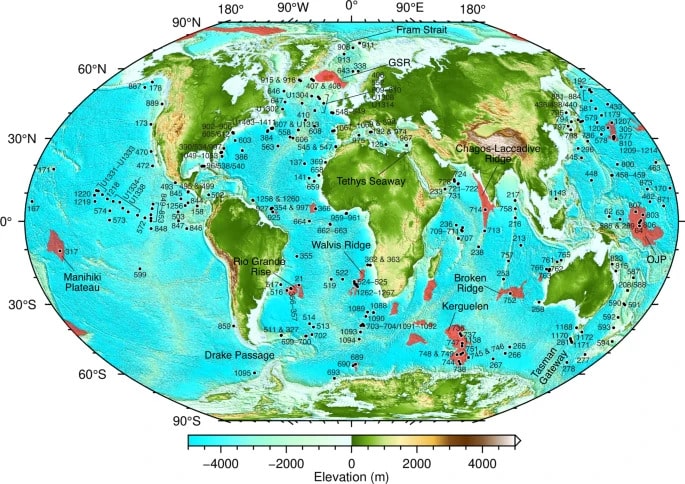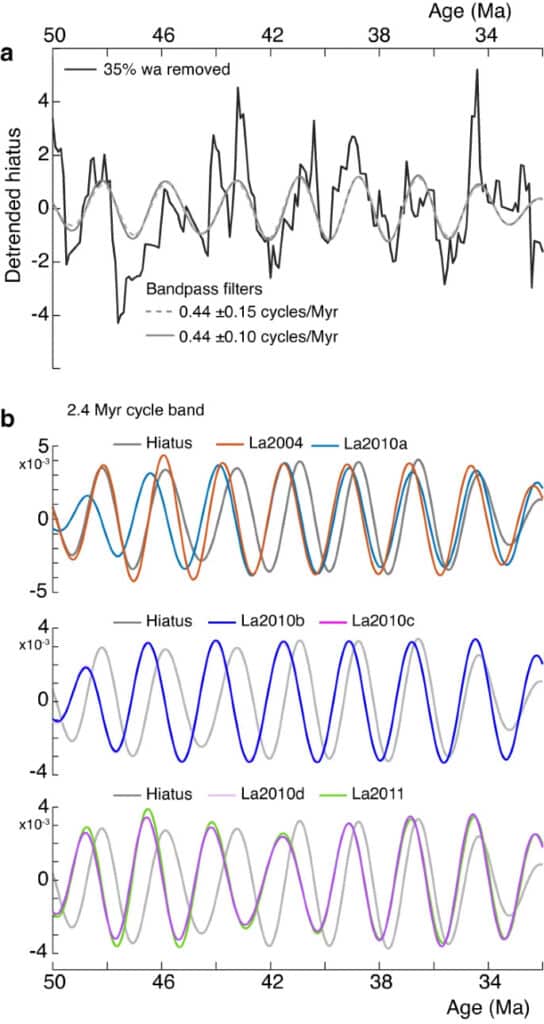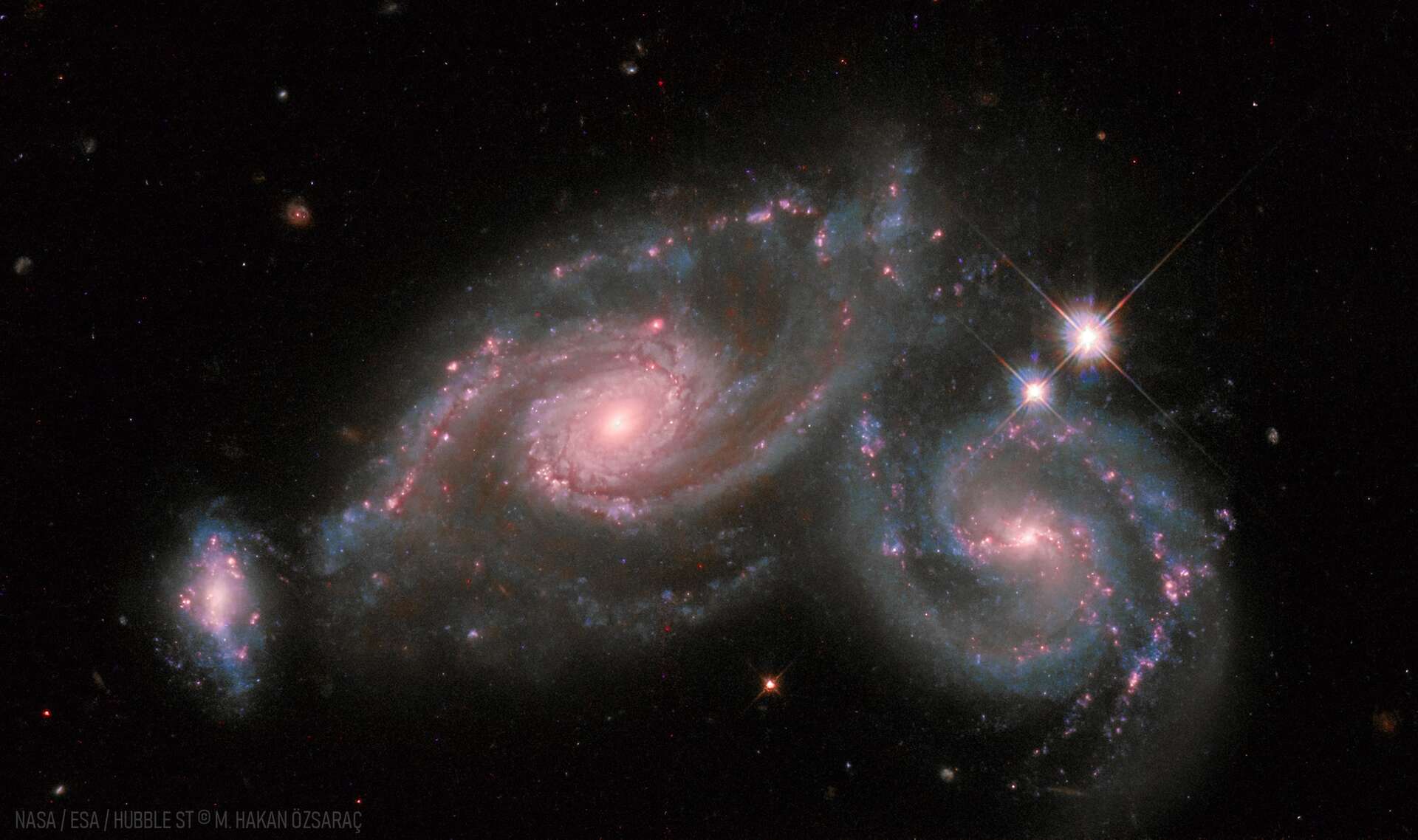Mars’ gravity will exert pressure on deep ocean currents every 2.4 million years

⇧ (video) You may also like this partner content
Researchers have found that a 2.4 million-year climate cycle influences the strength of deep ocean currents as the oceans warm. This cycle is thought to be linked to cyclical interactions between Earth’s orbit and the orbit of Mars, which in turn correlates with periods of increased solar radiation and warmer climates. As global warming threatens the collapse of the Atlantic Meridional Overturning Circulation (AMOC), this phenomenon could potentially destabilize it.
Since the 1970s, many studies have shown that Earth’s climate can be affected by periodic perturbations in the planet’s orbit. Various astronomical cycles ranging from 19,000 to 400,000 years are known to punctuate Earth’s climate cycle. The geological record has also indicated the presence of extended loops. These loops, called “Grand Cycles”, consist of orbital variations lasting millions of years.
Larger orbital cycles are associated with changes in incoming solar radiation and climate. An example of these loops is the eccentricity cycle associated with the precession of the perihelions of Mars and Earth, which lasts for 2.4 million years. Precession is a gradual change in the direction of a planet’s axis of rotation.
Display a powerful climate message 🌍
” The gravitational fields of the planets in the Solar System interfere with each other, and this interaction, called resonance, changes the eccentricity of the planets, a measure of how close their circular orbits are. », explains Dietmar Müller in a press release from the University of Sydney. However, most data from high-resolution stratigraphic records relate to only relatively short periods.
To fill this gap, Müller and his colleagues at the Sorbonne University analyzed the geological record of the deep ocean to study the link between the periodic interaction of the orbits of Mars and Earth and cycles of past global warming. In particular, the study addresses the question of how geological-scale climate change and large-scale circulation cycles may affect ocean currents. The results are published in the journal
Nature Communications.
An event that can destabilize ocean currents
As part of this latest study, researchers collected 370 deep-sea sediments spanning 65 million years. A hiatus is a break in sedimentation where there is no chronological continuity between layers. Indeed, disturbances in the strength of deep ocean currents lead to significant movement of sediments. The aim was to find out if these movements corresponded to the main circulation cycle. Samples were taken from 293 deepwater drilling sites, distributed across all oceans.

Map showing deepwater drilling sites where samples were collected. © Adriana Dutkiewicz et al.
After analysis, the researchers found that the strength of the deep ocean currents appears to vary on a 2.4 million year cycle. Lead author of the study, Adriana Dutkiewicz of the University of Sydney, said: “We were surprised to see this 2.4 million year cycle in our deep sea sediment data. There is only one way to explain them: they are connected to the cycle of interaction between Mars and Earth in orbit around the Sun.
This means that Earth has experienced periods when incoming solar radiation was high and the climate was warm, according to this 2.4 million year cycle. This period also appears to coincide with stronger deep ocean currents. This suggests that although the AMOC (which includes the Gulf Stream) threatens to collapse due to global warming, this cyclical phenomenon could potentially destabilize it.
See also


Correlation of break frequency and eccentricity patterns of Earth’s orbit in a 2.4 million year cycle band, in the interval from 50 to 32 million years. © Adriana Dutkiewicz et al.
” We know that there are at least two distinct mechanisms that contribute to the strength of deep water mixing in the oceans. AMOC is one of them, but seems to play an important role in warming climates in keeping the ocean air. », explains Müller.
However, how these cyclical interactions might influence the dynamics of ocean currents is largely unknown, experts say. Furthermore, “it will not have the same effect as the AMOC in transporting water masses from low to high latitudes and vice versa “, Muller said. Nevertheless, the team hopes that these results can help improve current climate models.
Source: Nature Communications





